Straight from an RAF Nimrod XV241, approximately 12,000 Lbs of thrust and quite thirsty.
The first Spey 250 was taken directly from the RAF Nimrod Aircraft XV241, I believe it to have been the number 3 engine. The Nimrod pictured above and in the next 3 photos are of the actual aircraft it had been removed from.
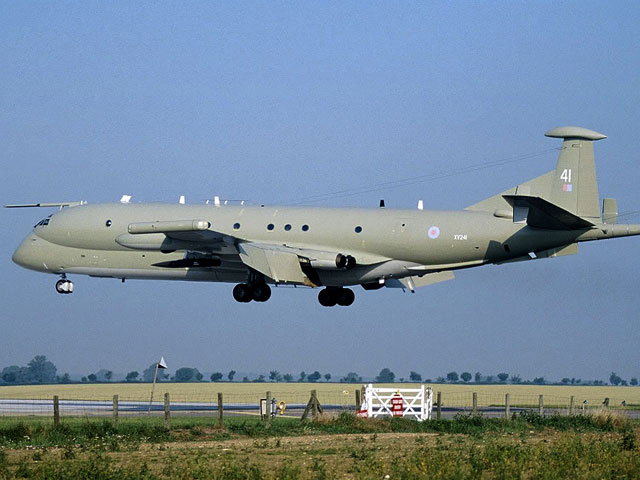
These images were not taken by myself and were sourced from various locations on the web.
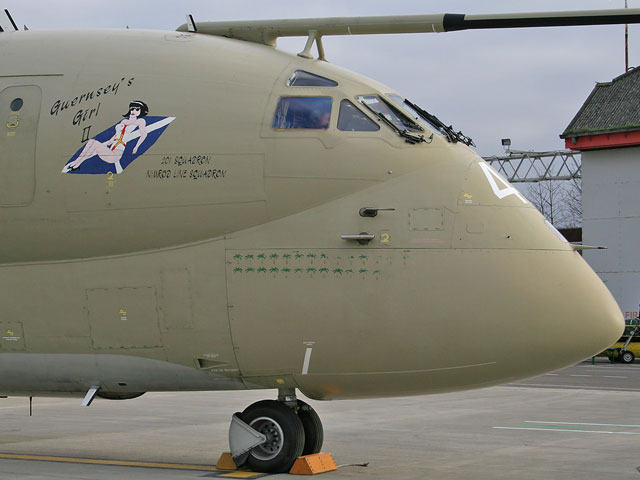
A moody picture of Nimrod XV241.

The Nimrod fleet were sadly decommissioned in 2010 and this is XV241 being stripped down. The nose section has now been moved to a museum.
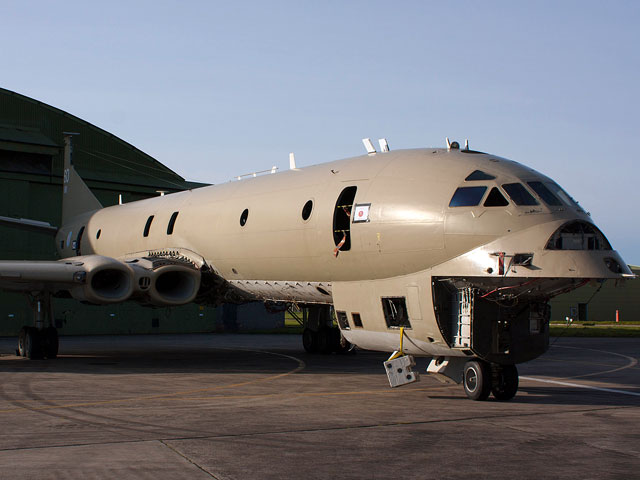
The engine and transport frame are just a tad over two ton and required my 3 1/2 ton rated trailer to get it back home.
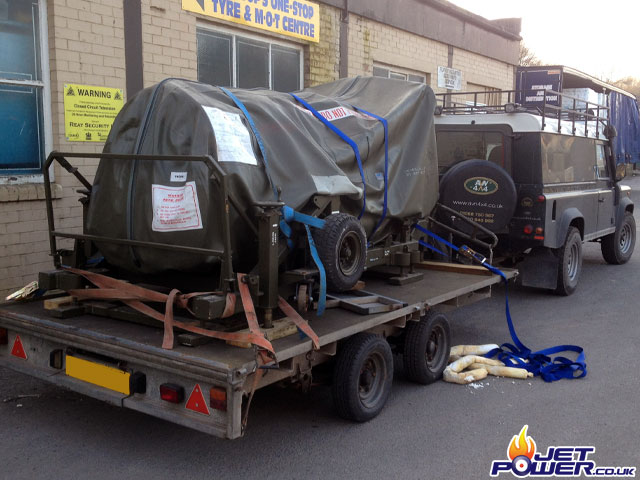
I relied on my mate Rick and his trusty Landrover to tow it back to Shropshire, should I have tried using my own car, I would currently be buying a new clutch by now.
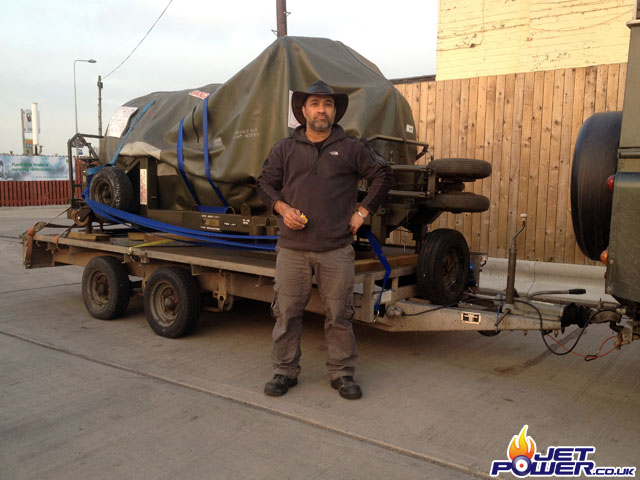
Engine Change Units usually come in water tight bags and silicon based absorption bags are placed inside and all around the engine it to stop condensation forming. Pictured is the rear view of the bag and engine.
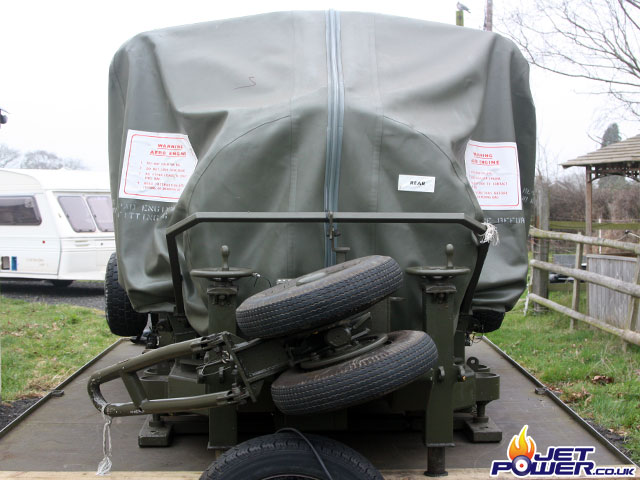
And this is the front end of the bag and engine.
Unfortunately the paperwork that came with the engine was lost by the seller (after I purchased it), Loosing the paperwork effectively reduces the value of any turbine as the history, serial details and tractability are lost.
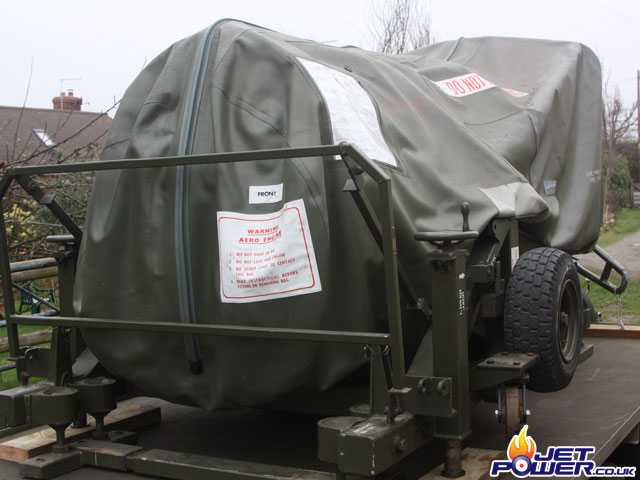
Close up view of the intake dome, I presume the grey colour in the centre is evidence of wear from FOD (flies and air borne dust etc) wearing away at the paintwork.

Rear right hand view.
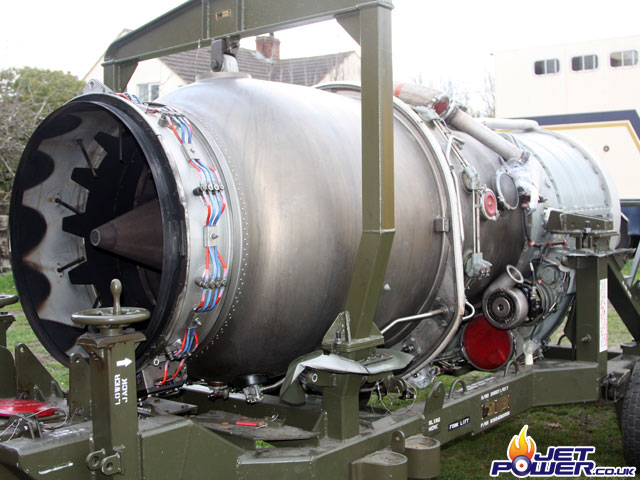
Front right hand view.
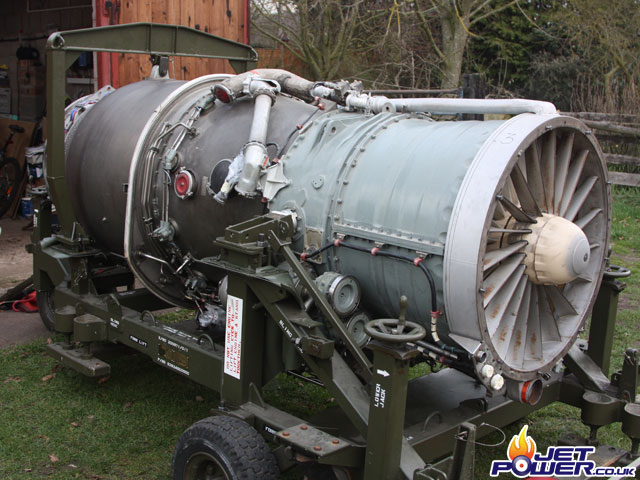
Front left hand view.
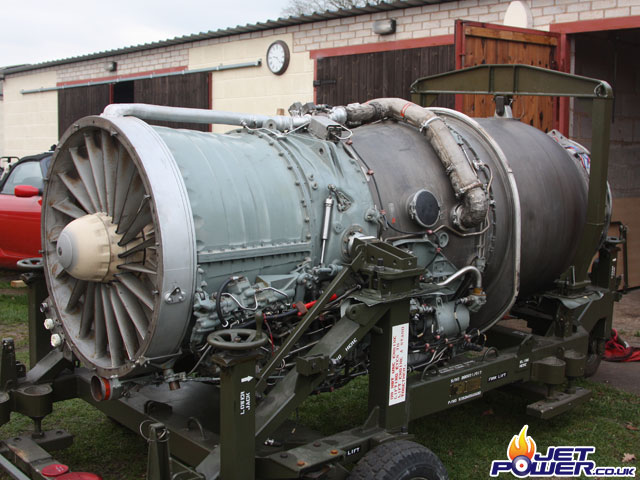
Right hand view.

Left hand view.

Part of the Fuel and Oil system mounted on the underside of the engine.
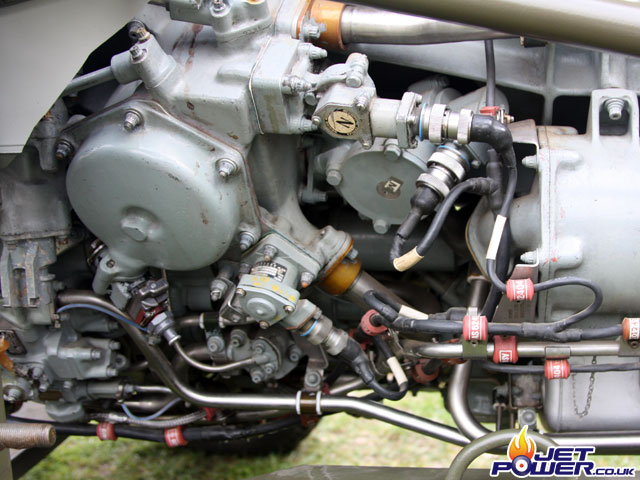
Time to start thinking about getting the engine to a working state, I’m starting of with the electrical connectors which were sourced by Servo, these provide connectivity to the three wiring loom’s attached to the Spey.
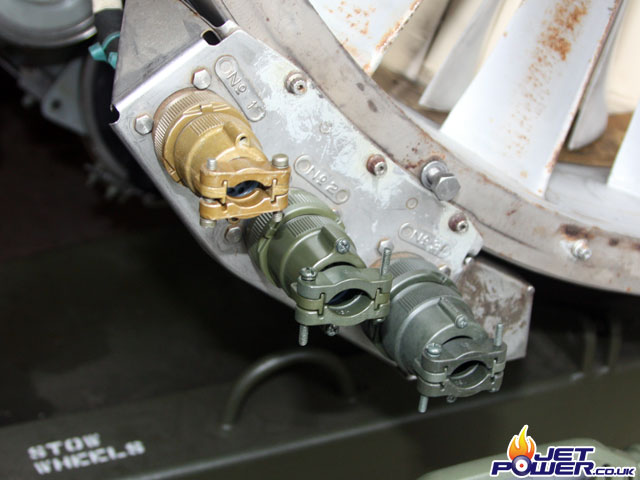
Pictured is the Air Starter or sometimes called an Pneumatic Starter, this had to be sourced separately as it doesn’t come as part of the engine change unit.
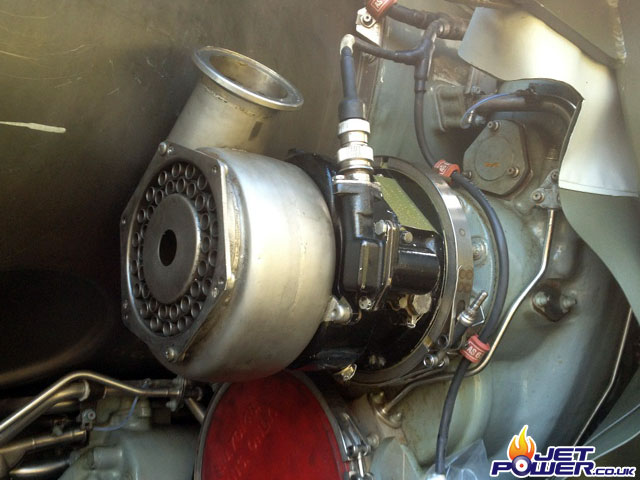
ASV, that connects to the Air Starter, again this had to be sourced as it is not part of the engine package and is classed as an airframe component.
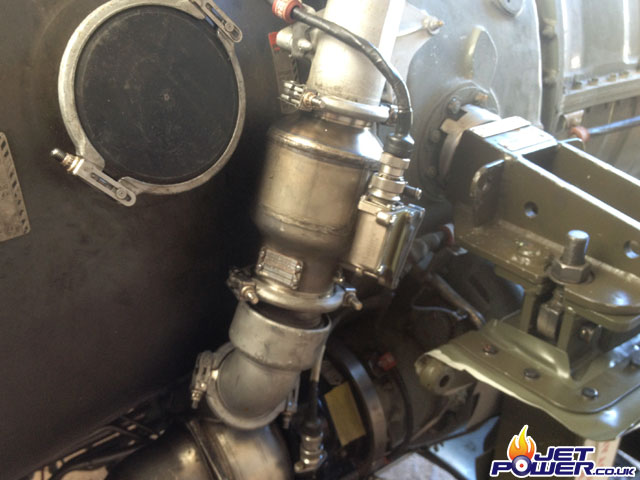
Pictured is the plate where the Alternator is situated and directly on the opposite side of the gearbox is where the CSD unit is located. I have tried to source a CSD and Alternator but they were prohibitively expensive, whilst not required for ground running, I have decided to try to do without them. This does bring in to question what do I do about the oil feeds that were used to cool the Alternator, a job for another day as this requires some thought.
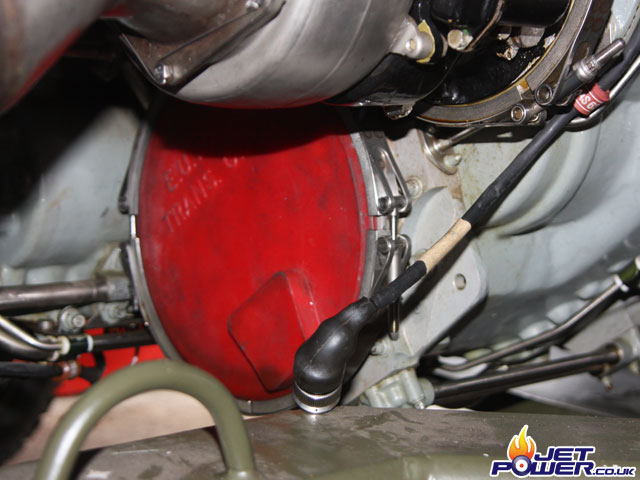
I took the opportunity to remove the electronic components of an engine that Harry and Andy were scrapping, pictured is Andy with the Spey being stripped down, sad to see, but that’s life.
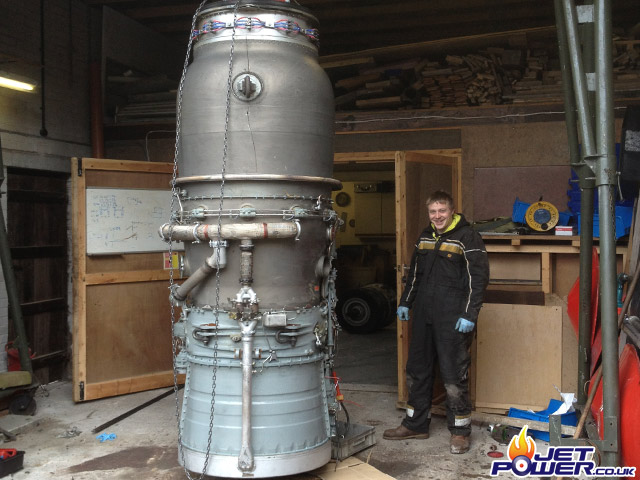
Pictured are the three loom’s with the components attached, this makes life easier when it comes to identifying what the individual components do on the engine, it also means they do not have to be removed from my running engine which isn’t a bad thing, thus saving having to make replacement gaskets and seals.
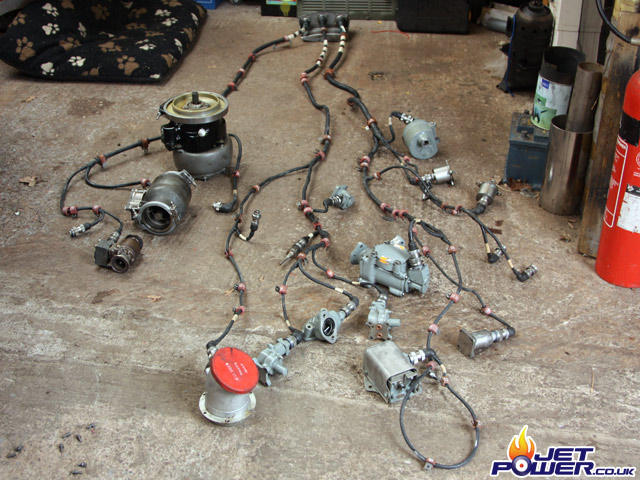
At the moment it’s almost a full time job looking out for the Spey parts that will be required to run the engine, I had the opportunity to pick up this air intake, although it’s not really a requirement, it does house the T1 probe, it may even lend itself to the being attached to a bell mouth of some description.
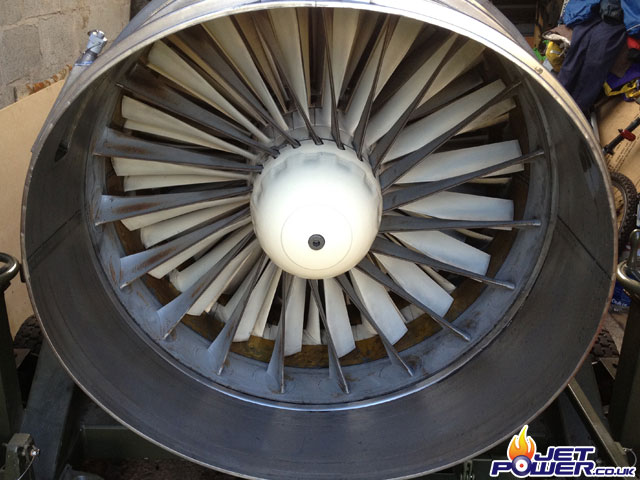
In my search for knowledge about the Spey, I was fortunate to meet up with an engineer that was actually based at RAF Kinloss and worked on the Nimrod Aircraft. I have to say a big thank you to Shuggie 803 Hughes, he came out of his way to give me a tutorial on the engine, along with lots of interesting antidotal information. Shuggie, your welcome to come back down and have a Truck Stop Breakfast any time!
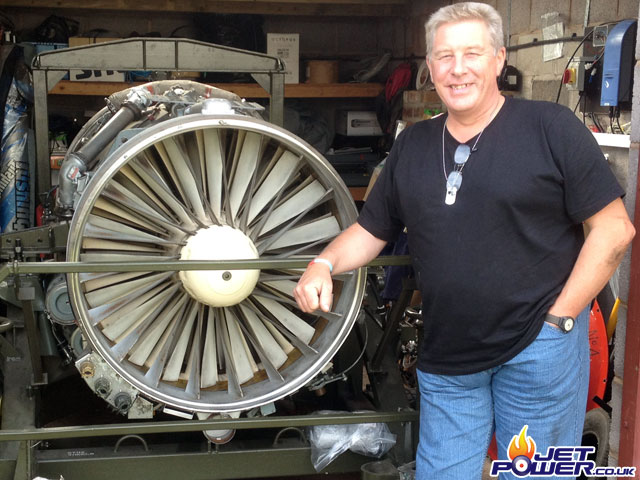
When it came to fitting the CSD and the Alternator, due to the weight of the respective devices a helping hand was required. Luckily Lee Povey and Chris Bladon popped around for a cuppa and before they new it they were giving me a hand. It was a bit of a squeeze getting the devices to fit whilst the Spey was still sat on the trolley, but with a bit of patience, we managed it.
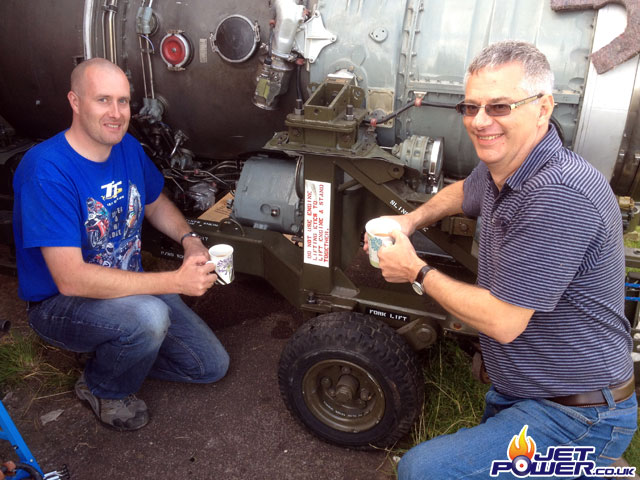
Generator Specs.
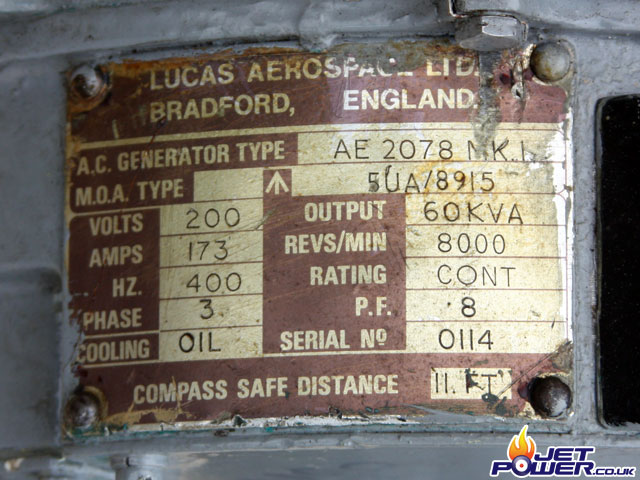
CDSU or Constant Speed Drive Unit, kind of imaging a torque converter in reverse.
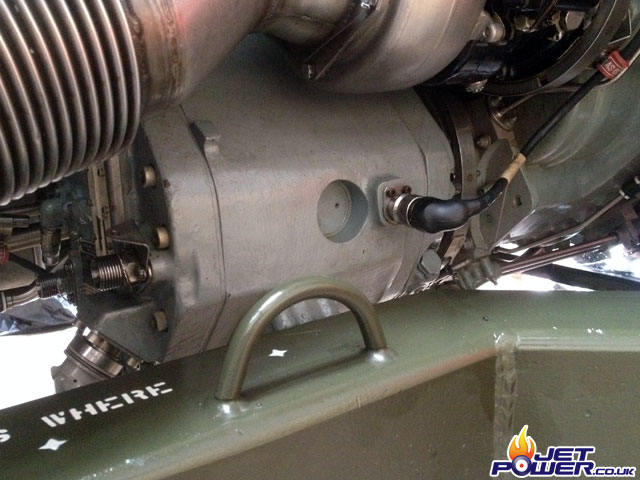
115V 400Hz Alternator.
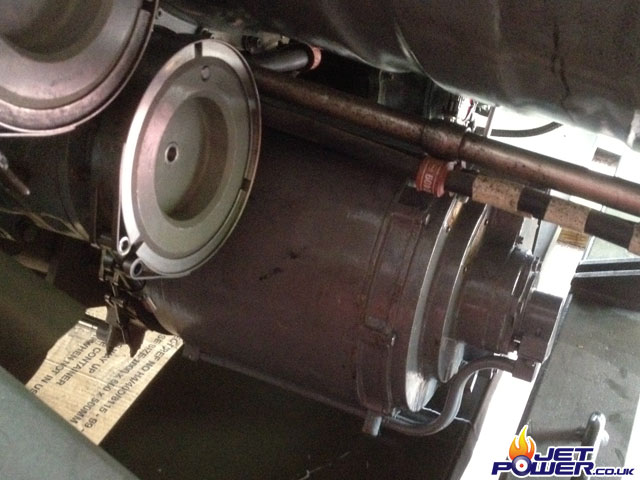
After months of research in to the Spey and searching the UK and USA for instrumentation, it’s now time to start making the control panel. A good chunk of the Spey’s electronics depends on 115 & 26volt 400Hz power, thus one of the searches was for Inverters that can provide such a source. Pictured is a fairly common Ekco unit, one or possibly two will be required.
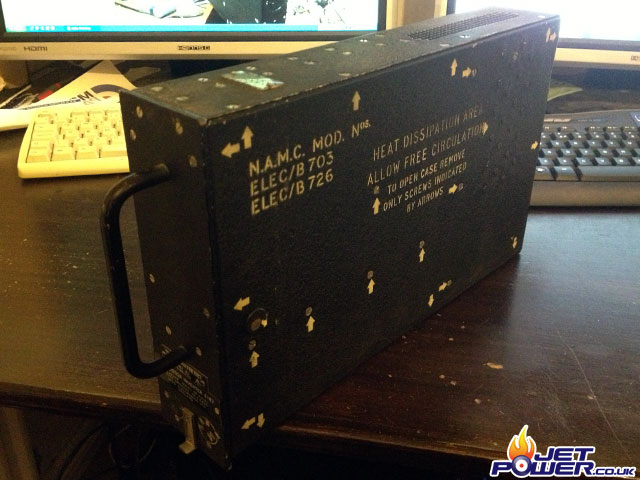
I contacted several company’s searching for connectors that would fit the Ekco units, as you can see from the image above its an odd style of connector, Servo managed to find me some with a lead time of 8 weeks and a cost of about £150.00 each! Once I got back of the floor I decided that it would be far more economical to swap the connector itself for a more common variety,
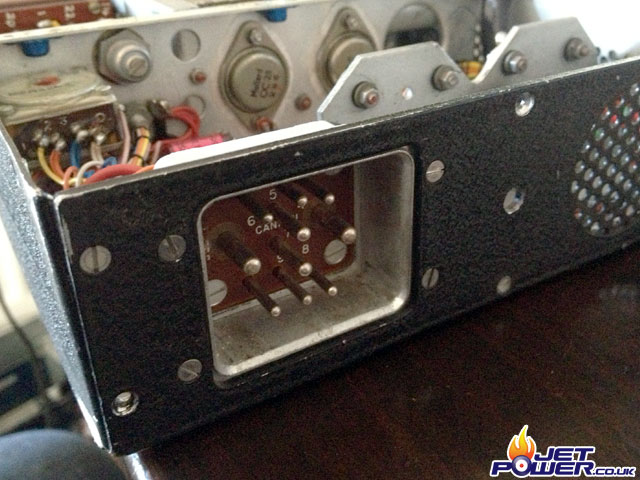
The choice was a 2 plus 5 pin connector that is used on other makes of Inverter, a mounting plate was made, the wires re soldered and then bolted together. The mating wires have been attached in a way that the mating plug can be used on other Inverters.
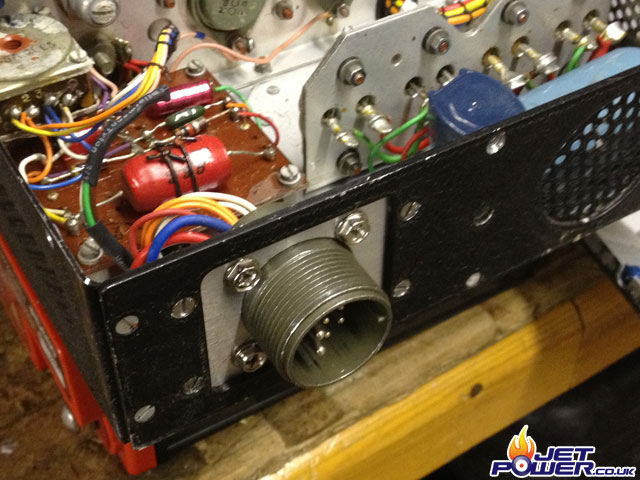
There are three main looms that feed the Spey’s electronics, all have fairly serious amounts of connections, pictured above is the No3 loom with 35 cores, a real pain to solder neatly.

Pictured if the 35pole connector finished, I still have to work out which type of connectors I am going to use at the other end of the loom. A forth non standard loom will be added to provide power to the two HEIU’s and for the pair of Thermocouple leads.
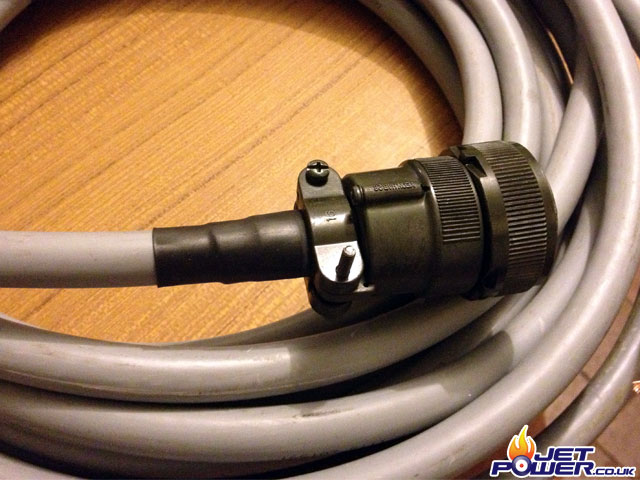
Picture is the start of the Spey 250 control panel, a few more holes have yet to be added, but this is a good start, as always laser cutting was used to achieve a great finish.
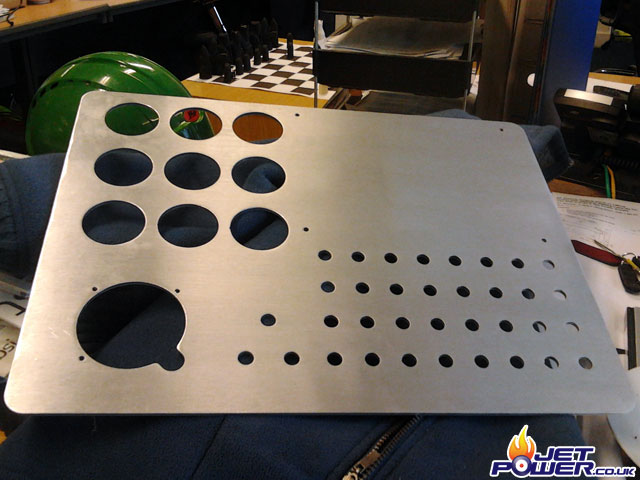
A picture of the top of the panel with nearly all the switch’s and gauges in place, just need to sort one more gauge.
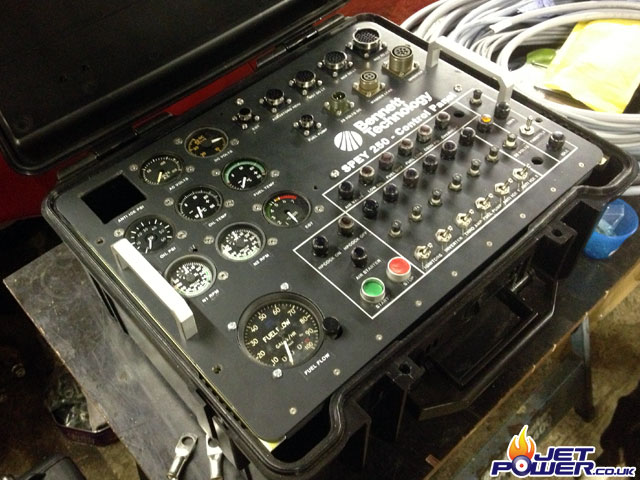
Underside of the panel before the commencement of the wiring. I have been putting the wiring of for a while as there is just so much of it, on the next rainy day I guess I had better start.

Now that the control panel is finished, my attention has turned to sorting out the air delivery pipe work. The quick release assembly pictured above connects to the Spey itself, the QR being on the L/H and the connection to the engine on the R/H.
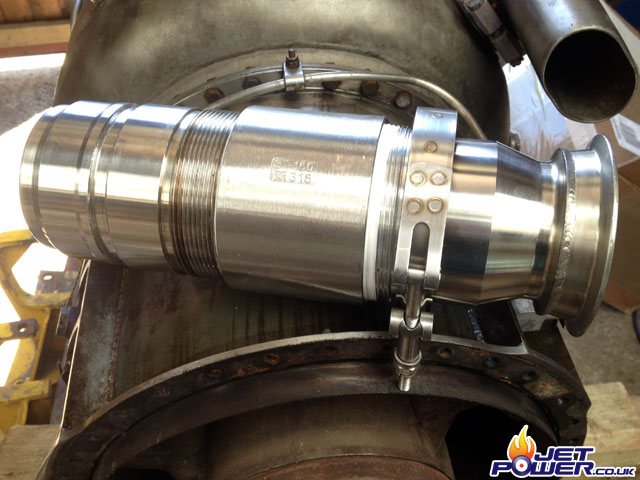
The Spey is now mounted on to my Secret Weapon.
A couple of jobs to do on the Spey and then all I need to do is link the Spey to the starting APU and I should have a running engine!
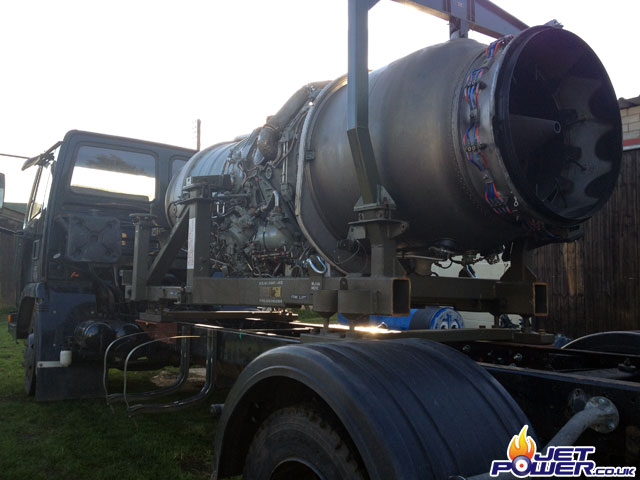
Side profile – the twin red oxide coated bars are for mounting the Olympus 593 on to, a dual purpose lorry!
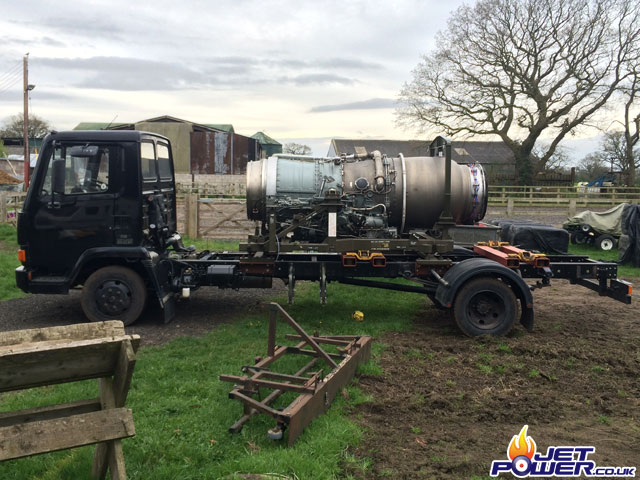
A General Electric CF6-50 and the Spey250 in the foreground.

The Story Continues Here:
The Grand Tour – 9. Breaking, Badly
